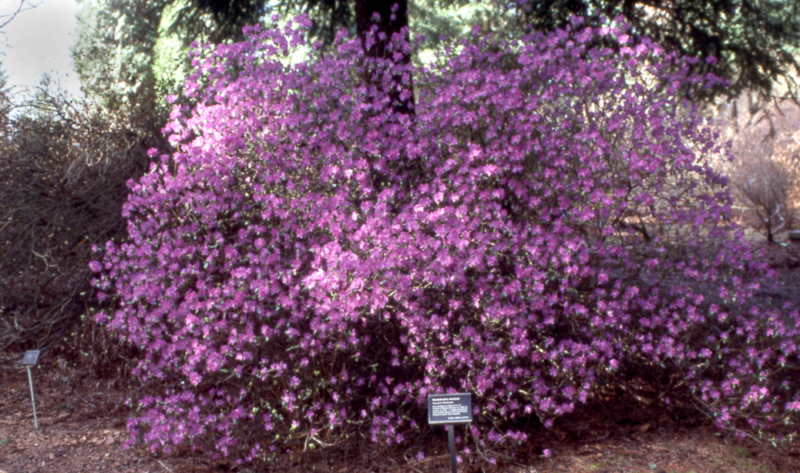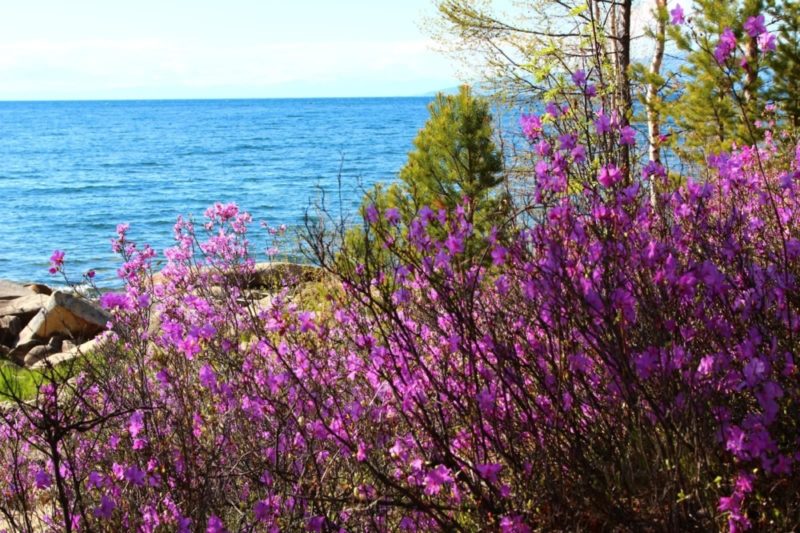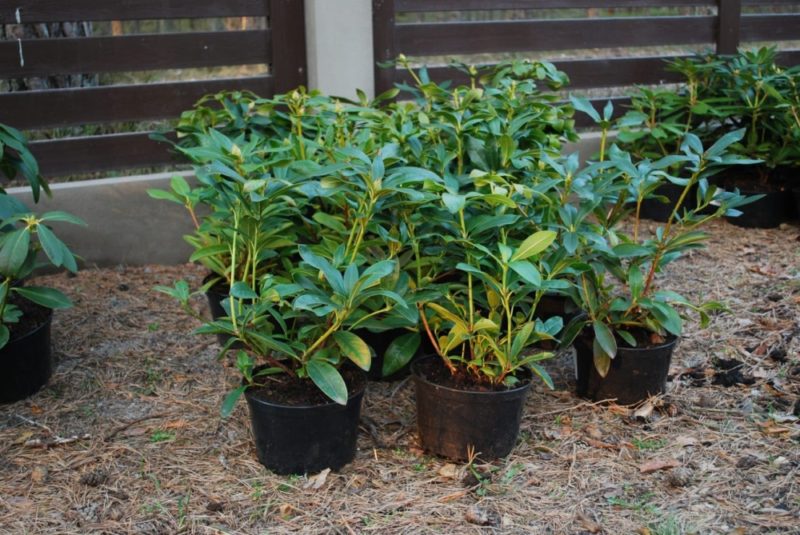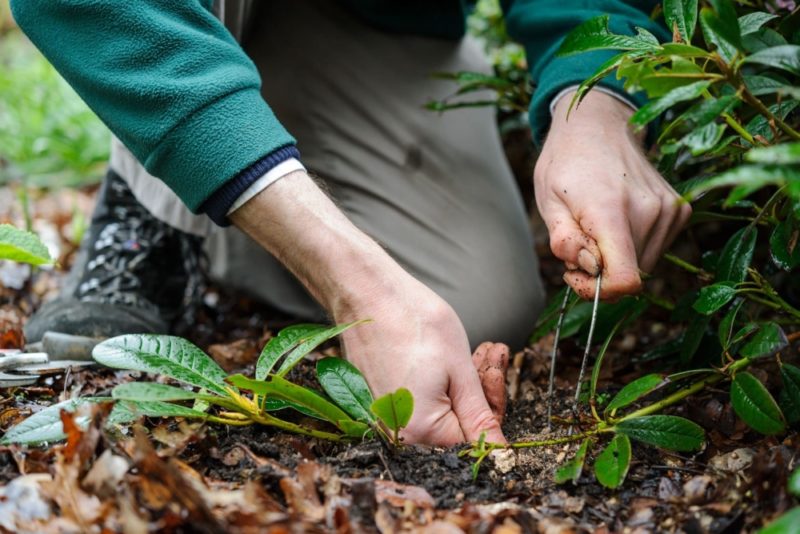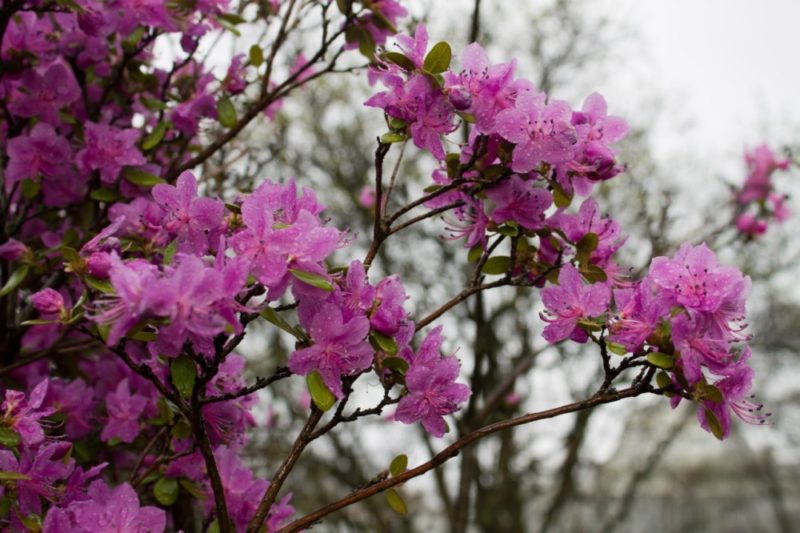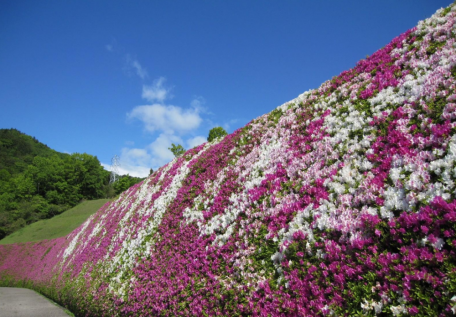During flowering, Daurian rhododendron impresses with its splendor and elegance. Everyone who has ever seen this shrub in the wild, lights up with a desire to grow it on its site.
Material Content:
Description of Daurian Rhododendron
In nature, shrubs can be seen in Siberia. The plant belongs to the Heathers. Many call rhododendron rosemary, but nerds do not recognize any similarities between them.
Rhododendron daursky (rhododendron dahuricum) has several varieties. Some of them differ in tiny flowers and stems, while others, on the contrary, have very powerful stems and large flowers. Sometimes the inflorescence of the Daurian rhododendron reaches a diameter of 20 cm.
If you make a brief description of the species, the plant has a great tendency to branch and consists of 30-40 shoots, directed upwards. Young twigs are very dark. The bushes have oval foliage, a little rough on the back. Leaves appear after flowering.
The most amazing part of the plant is its inflorescences. In a favorable climatic zone, the bush blooms in the second half of spring and continues to bloom almost until mid-summer. The buds resemble bells in shape, painted in bright scarlet, juicy purple or lilac.
Outdoor landing
To achieve lush and prolonged flowering of rhododendrons, some efforts should be made. Very responsibly you need to approach the choice of a seat.
Bushes do not like the areas blown by the north wind, as well as under the scorching sun. You can not plant these plants in lowlands with stagnation of moisture and a close occurrence of groundwater. The soil should be highly fertile with high acidity.
Important! In the vicinity of the rhododendron, large trees should not grow, which deplete the earth and compete with the shrub.
When purchasing rhododendron seedlings, do not be shy to ask the seller about the preferences of the species for the soil, about the intricacies of planting and growing. Do not buy planting material from hand, as an unscrupulous seller can sell any rhizome under the guise of a high-quality rhododendron. It is advisable to choose a good agricultural complex. It is preferable to acquire young plants about the age of 3 years. If the seedling is grown from seeds, then by the age of three it should not exceed 15 cm. The seedling grown from the cuttings should reach a height of 25 cm. Such plants are already adapted to the climate of the region and should take root well.
Daurian rhododendron is notable for its relative capriciousness and excellent winter hardiness - the plant quickly acclimates and starts growing after planting. But there are varieties that require the creation of additional conditions for flowering. Therefore, it is better for a beginner grower to choose the most non-whimsical species.
Planting is preferable in the spring, so that the rhizomes of young bushes have time to adapt and grow stronger before the cold weather. You can plant a plant in the fall, but only if you purchased a seedling with a closed root system.
It is very important not to deepen the root neck: it should remain a couple of centimeters when planted above the soil level.
Rhododendron planting step by step:
- Prepare a landing hole measuring 50 cm wide and 70 cm deep. Prepare the landing pit should begin a month before the planned landing.
- Lay out the recess with a drainage layer. Brick crumb or crushed stone will do. The thickness of the drainage should be about 20 cm.
- For group planting between holes, approximately 80 cm should be left.
- Pour a layer of fertile soil on top of the drainage. It is necessary to fill the hole with soil by a third.
- Add 70 g of the mineral mixture to the well and mix with the soil.
- Lower the seedling into the pit, straighten the rhizome and cover it with soil from peat, coniferous litter and deciduous land.
- Water the seedling. tamp and mulch.
After planting, you need to check the plants. Many gardeners pour a mound over the root neck so that a funnel does not form around it after watering.
Agrotechnics of cultivation and care
Rhododendron, the care of which is not so complicated, when the gardener follows all the rules of agricultural technology, will for many years become the main decoration of the garden.
It is advisable to water the bushes two to three times a week, but without fanaticism, since the rhododendron does not like excessive dampness. Tap water has a detrimental effect on the culture, so it is advisable to stock up on soft, for example, rain. Experienced flower growers add a little citric acid to the tap water (about 100 g per bucket). Under each shrub spend two buckets of fluid. Particularly important in autumn is pre-winter watering, which in no case should be missed.
To maintain the acidic environment of the soil, experts sometimes recommend adding a little sulfuric acid to the water for irrigation.
The plant needs regular weeding and loosening of the soil. These procedures are most conveniently carried out the day after watering. It is important to loosen the round bore circles, and after work it is imperative to mulch. The mulch layer should be at least 5 cm.
Every two years they carry out root dressing of rhododendrons:
- The first procedure is at the beginning of the growing season. Under each shrub make 10 kg of well-rotted manure.
- The second top dressing is carried out after flowering. Phosphorus and potassium are needed during this period.
The obligatory stage of care is pruning, although the correct formation of the crown is already genetically incorporated in these plants. Cut old branches that have reached a diameter of 4 cm. It is also necessary to remove faded brushes in time that interfere with abundant and prolonged flowering.
For winter, only young bushes are closed.Adult plants easily tolerate frosts down to -30 degrees. It is enough to mulch the parabolic circles with leaves about 25 cm thick. For young seedlings, the crown is covered. It is advisable to build around the plant a house of boards, which is covered with roofing felt on top.
Breeding methods
The most productive method to dilute rhododendrons is layering. To do this, choose a strong escape and dig it. The ground under the cut needs to be constantly watered. The procedure is carried out in the spring. In the second year, the young plant can already be separated from the mother bush.
For cultivated species, cuttings are used. To do this, cut shoots about 10 cm long and bury them in nutrient soil. The container with the cuttings should be warm.
After a month and a half, the branches can be planted in separate flowerpots. Such plants are transplanted into the ground only in the second year. Reproduction by seeds is also possible, but it is used mainly in breeding.
Pest and Disease Control
Rhododendrons are often attacked by harmful insects. Weevils, ticks, scale insects, and earthworms are especially bothered by plants. To control pests, the drug "Diazonin" is used. When fighting insects, not only the shrub itself, but also the ground around it should be sprayed.
Of the diseases, rhododendrons are susceptible to rust, spotting and chlorosis. The best cure for disease is Bordeaux fluid. Affected parts of the plant should be removed, and healthy parts should be treated.
On a note! For prevention, the bushes are sprayed with Bordeaux liquid in the spring and before wintering.
Landscaping Ideas
Landscaping with blooming rhododendrons is a real fairy tale. When planting a flower ensemble, it is important to consider the time of flowering plants. It is also desirable that the color scheme is in harmony. The best neighbors for the rosewood are ferns and bright green junipers.
The Daurian look looks great next to the conifers. The deep rhizomes of conifers allow the surface roots of rhododendrons to develop.
The bush will be comfortable in the rock garden, which created a natural rocky atmosphere. Excellent on the alpine hill, bushes combine with heather.
In large areas, a long hedge of rhododendrons looks very impressive. Great neighbors for bushes - all bulb plants.
Having planted rhododendrons on your site, providing suitable conditions for them, you can admire their flowering for many years.


